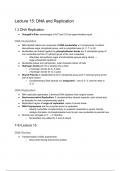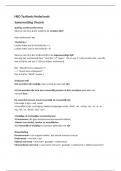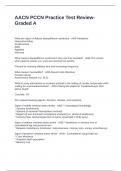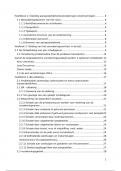Introduction
In the MT, we looked at the mechanics of the labour market:
- Labour supply
- Labour demand
- Labour market equilibrium
- Income inequality
Recall: 𝑤 ∗ = 𝑀𝑃𝐿 (i.e. wage determined by marginal productivity) → however, won’t actually have a single wage:
Are workers the same? Are jobs the same? Are employers the same?
- Ability - Monitoring costs - Discrimination
- Race, gender … - Workplace conditions,
- Knowledge amenities
- Age
UK Hourly Wages for Females and Males in 2018
- We see there are people earning £4 per hour and
people earning £40 per hour, so there is a lot of
dispersion in wages
- We also see differences in gender, with males being
better off, as there’s relatively more to the right tail
than the left tail
- There’s a spike at £7.50, as this is the minimum wage
(in 2018) → without this, they probably would’ve
earned less
- However, there are some people earning less than the
minimum wage → either violation of law, or younger
workers (16-25)
UK Hourly Wages 2018-2020 (April)
- The blue line = 2018, the green line = 2019 and the black line = 2020
- We see that the spike is moving South-East (i.e. higher
minimum wage, and fewer workers at minimum wage)
o Minimum wage: £7.50 in 2018, £7.83 in 2019 and
£8.72 in 2020
- Why are there fewer workers at minimum wage? One view
may be that workers are earning more, so there’s fewer at
minimum wage, but what we see in 2020 is that there’s
more workers earning below minimum wage
o Furlough scheme: government pays 80%, and the
employer pays the remaining 20%
o However, looking at data, 55% of those furloughed
were on minimum wage → 80% paid by the
government, but then the remaining 20% isn’t being paid by employers
,UK Annual Earnings by Occupation 2020 (April)
- What is interesting to note is that even within categories of
workers such as managers, we have a wide dispersion (left dot
may be manager of a hair salon, and right dot may be a CEO)
- The group with the highest average wages is pilots (the right
dot under associate professional and technical occupations)
- Looking at process, plant and machine operatives, the right dot
are train/tube drivers, whereas bus drivers are in the middle
somewhere
o They’re earning much more due to collective actions
→ a lot of strikes, hence strong bargaining power,
whereas buses are quite segmented with lots of small
companies
UK Gender Pay Gap 1997-2020 (April)
- Looking at the median in 1998, males were earning around
17% more than females, and in 2020 the gap fell to around 7%
→ quite a striking fall
- There is a similar trend for the 10th percentile
- However, looking at the 90th percentile, the fall is much
smaller
- If we look at just 2020, we see all three lines have a drop, and
one interpretation may be that working males were more
badly affected than working females by Covid
- But when we look at the data, we find that this isn’t
necessarily true, so another interpretation could be
compositional changes → low wage females likely to lose jobs more than low wage males, so we see
relatively less low wage females in the economy compared to males, which reduces the gap
UK Annual Growth in Average Weekly Earnings 2020
- Comparing April-June 2019 to April-June 2020 (blue), we see quite a substantial fall in nominal wages in the
whole economy
- Then, comparing August-October 2019 to August-October
2020 (green), we see nominal wages actually increased
- Optimistic interpretation: economy not doing as bad as
initially thought
- Pessimistic interpretation (and more likely): compositional
changes → low-paid workers lost jobs and disappeared
from the labour market, but were present in 2019
- We can also break this down by sectors:
o Financial services: enormous growth in wages in
second half of the year
o Public sector: same for both waves
o Manufacturing: more of a negative impact
,Human Capital
The Economics of Schooling
Public and Private Spending on Education, % of GDP, 2009
Why do economists spend so much time talking about education?
Public and Private Spending on Education, % of GDP, 2009 Average Years of Schooling
- Spend a lot of money on education → from 5-8% of - Also spend a lot of time on education
GDP - UK: in 1950, spent on average 5.5 years in
- A big fraction of this comes from the public sector, but education and in 2010 9.5 years
the private sector still plays a significant role
Relative Earnings of 25-64 year olds
- Education also matters a lot for earnings
- Compare wages for high school dropouts and college
degree holders
- Brazil: high school dropouts have wages that are 50% of
high school wages, and college degree holders have
150% of high school wages → enormous premium
- This premium exists in most countries
UK Hourly Wages for Skill Groups in 2018
- Looking at hourly wages for groups with different
levels of education, we see quite different
distributions
- Even looking within groups, some with high level
of education are earning low wages, while some
with low level of education are earning high
wages
- Overall though, the high education workers have
a better distribution than low education workers
Important questions:
- Why do we go to school? For how long?
- Why do more educated people earn more?
- Why do people make different educational choices?
, The Two-Choice Schooling Model
Assumptions:
- A student is 18 years old and has two options:
o She can quit after high school (HS) and go to work
o Continue to college (COL) and then go to work
- College education is costly (fees, books...)
- College has no intrinsic value to the student
- On the labour market, wage depends only on education
o College increases productivity and hence wages
- She only learns at school and her skills do not depreciate over time → her productivity does not change once
she leaves school
Potential Earnings Streams
- 𝑤𝐻𝑆 = wage of HS graduates; 𝑤𝐶𝑂𝐿 = wage of COL graduates; 𝐻 = the direct cost of education
- We are assuming she finishes school at 18, and she’ll retire at 65
- If she quits after high school, her earnings stream is the black line: she
earns 𝑤𝐻𝑆 at 18, and stays at this constant wage until she retires at 65
- If she goes to college, she has two types of costs: direct cost of college
−𝐻 (section below the x-axis) and the opportunity cost of education
(what she could have earned if she had gone to work → this is the
section between the x-axis and the black line)
- Then, once she graduates at 22, she no longer has the cost of college,
but now earns a wage of 𝑤𝐶𝑂𝐿 → she then remains at this constant
wage until she retires at 65
- Thus, she faces a trade-off: if she goes to college, she will have higher
wages in the future, but lower income today
How can we compare these two options?
Student’s Choice
- The student must decide at the age of 18 whether to attend college (she will work until 65)
- She compares the present value of earnings streams
𝑤𝐻𝑆 𝑤𝐻𝑆 𝑤𝐻𝑆
𝑃𝑉𝐻𝑆 = 𝑤𝐻𝑆 + (1+𝑟) + (1+𝑟) 2 + ⋯ + (1+𝑟)46
vs
𝐻 𝐻 𝐻 𝑤
𝐶𝑂𝐿 𝑤
𝐶𝑂𝐿 𝑤𝐶𝑂𝐿
𝑃𝑉𝐶𝑂𝐿 = −𝐻 − (1+𝑟) − (1+𝑟)2 − (1+𝑟)3 + (1+𝑟) 4 + (1+𝑟)5 + ⋯ + (1+𝑟)46
- She will then pick the option with the higher PV
Example
- Suppose the student lives two periods and goes to college for one period
- 𝑤𝐻𝑆 = 20,000; 𝑤𝐶𝑂𝐿 = 47,500; 𝐻 = −5,000
20,000
𝑃𝑉𝐻𝑆 = 20,000 + 1+𝑟
47,500
𝑃𝑉𝐶𝑂𝐿 = −5,000 + 1+𝑟
- Given wages and costs, the decision whether to go to college depends on the rate of discount (𝑟)
- Hence, 𝑃𝑉𝐶𝑂𝐿 > 𝑃𝑉𝐻𝑆 when 𝑟 < 10%











